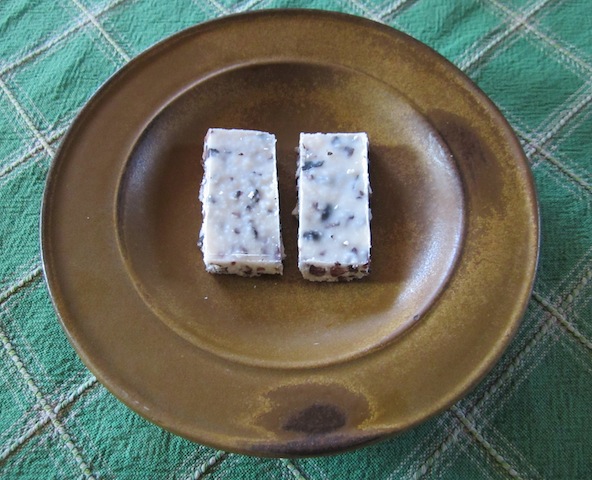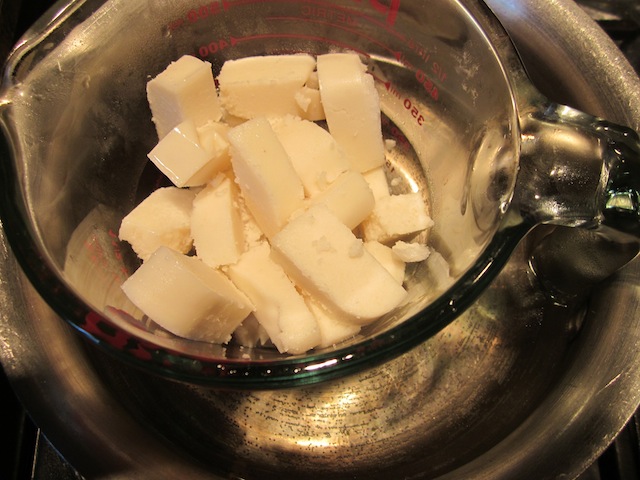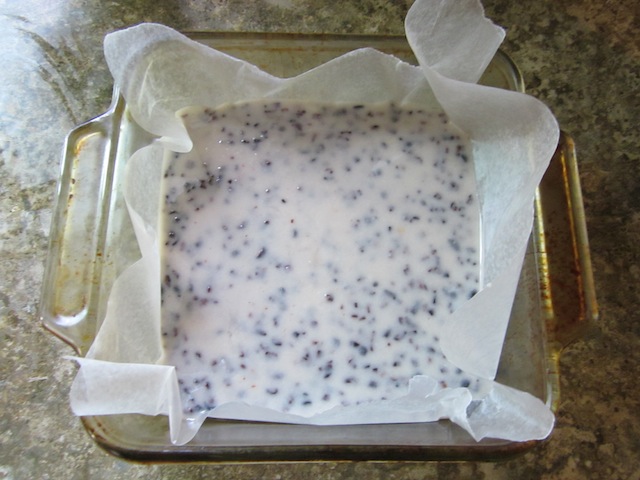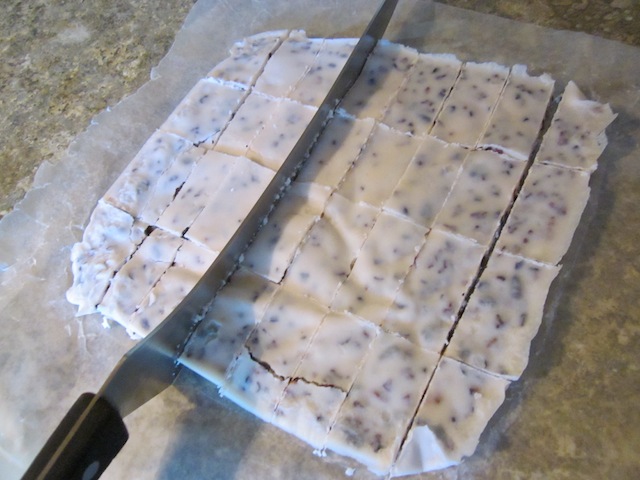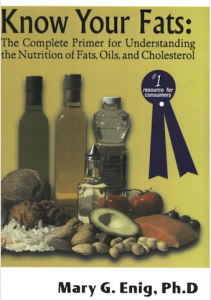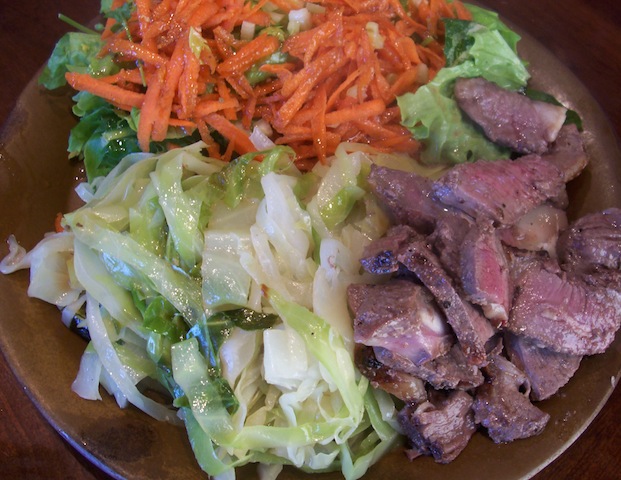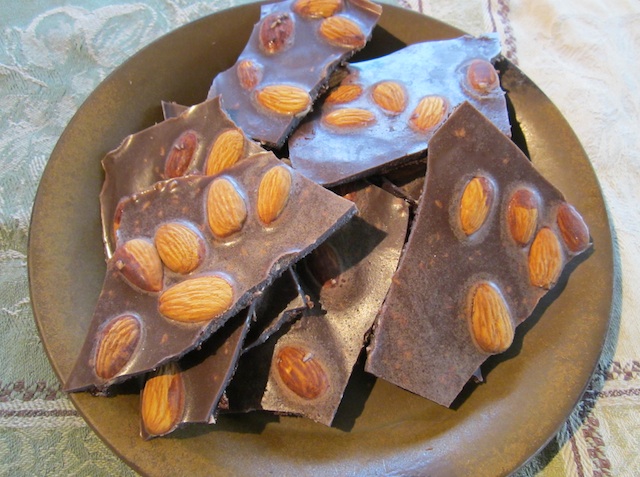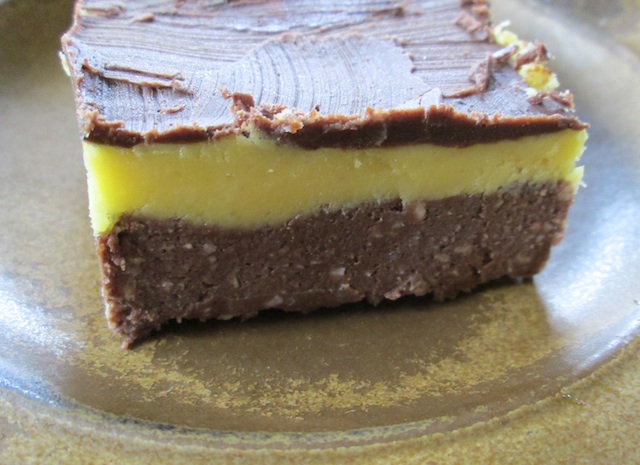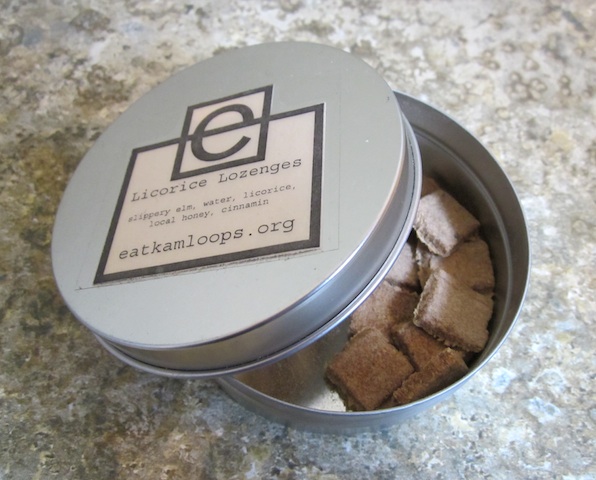
Once you get all the ingredients together making lozenges are easy. My girls really like the taste too. Remember to always label your homemade medicines.
March is one of the worst months for colds and flu. Here are some strategies for avoiding colds and flu.
Tip Number One: Eat a diet of nourishing traditional foods. Avoid all processed foods and sugary snacks. Make sure your diet has plenty of healthy fats. Eat coconut oil which has anti-viral components. During the winter, eat pastured lard which is high in vitamin D. During the winter and early spring, supplement your diet with fermented cod liver oil and high vitamin butter oil. If you have a source of raw milk you only need to supplement with fermented cod liver oil. Remember to eat your garlic. Use at least one crushed or minced fresh garlic clove everyday in your food.
If you do get sick, there are a few recipes below that will help your family avoid taking pharmaceutical drugs. Remember that colds and flu come from viruses which hate heat. Fevers kill viruses. Fevers should be allowed to take their course in most cases, except in very young children or very high fevers. An out-of-control fever is a medical emergency. Use good sense and get to emergency services.
Tip Number Two: Take care of yourself early in the illness. When you first get that sense that you are getting sick try taking Aconite 30c . This is a homeopathic remedy for stopping colds and flu but only works in the very earliest stages of an emerging illness. I started using homeopathic remedies because I wanted to do something very gentle for my children when they were ill. I have found homeopathic remedies work surprisingly well with young children. I use the Helios Homeopathic First Aid Kit.
If you prefer herbs, this is the time to use oregano essential oil (Origanum vulgare) which is a good addition to your Herbal First Aid Kit. (I will talk about making your own Herbal First Aid Kit in a later posting.) This is a very strong essential oil and can be used many ways. For an emerging sore throat, try 1-2 drops in the mouth twice a day. Swish the oregano essential oil around your mouth for a few minutes and then swallow. Some people find straight essential oils too powerful and will cut it with a small amount of olive oil. This treatment is better for adults. Children don’t like the strong taste.
If you prefer herbs, this is the time to take Echinacea Extract or Angelica Extract. Extracts take three to six weeks to prepare so it would be best to make the extracts in the fall or you will have to purchase the extracts at a health food store. Many people find Echinacea Extract works very well to improve immune function. I find Angelica Extract to work better for me. We are all different so you will have to experiment to find which extract will work best for you. The extracts should be taken three times a day in hot water. Along with talking an extract, make up a Ginger Infusion or Cold Away Infusion and drink this throughout the day. If you have a really sore throat find a local supply of propolis and suck on a small piece.
Remember food should always be your first medicine. If you are feeling poorly, this is the time to make some nourishing bone broths, stews and soups. Warming drinks are very comforting. Get plenty of rest. This is the time to increase your consumption of coconut oil to a therapeutic level which is thought to be 2-3 tablespoons a day.
Tip Number Three: Have some cold supplies in your pantry, ready for use. Here are six recipes that will come in handle if someone gets sick in the household. The Ginger Infusion will work for most colds and is liked by children. Cold Away Infusion is better when you are really sick and can’t seem to shake the cold or flu. Elderberry Syrup can be taken during flu season to avoid getting sick or can be used after the cold or flu sets in. Licorice Lozenges are really nice on a sore throat. Honeyed Ginger is good for a sore throat or nausea.
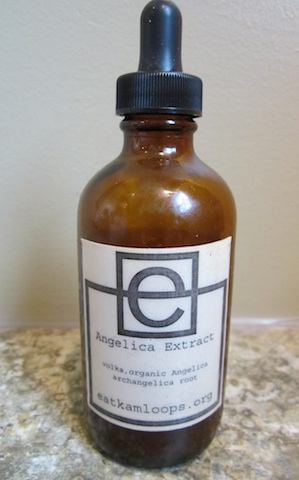
Making extracts are very easy but will take about six weeks to infuse. Start making medicines in the fall for the winter months.?
Echinacea or Angelica Extract
1/2c Echinacea root (Echinacea purpurea) or Angelica root (Angelica archangelica)
2c clear Vodka or Tequila, 40% alcohol
Use a small pint-sized glass canning jar with a plastic lid. Put either the Echinacea root or Angelica root into the jar. Add the alcohol of choice and fill the jar. Label the jar with the name of the plant, percentage of alcohol, today’s day, and the decanting day. Decanting day will be in six weeks. The jar will need to be turned over every day for at least the first week. On decanting day, use a cotton cloth to squeeze out all the liquid from the roots. Some herbalists use a juicer to get all the goodness out of the plant materials and into the extract. (Due to all the woody parts, I broke part of my juicer trying this, so be careful if you try this with your juicer. For home preparation, squeezing out all the liquid is far easier. Sometimes it’s best not to copy the professionals!) Store the extract in a dark glass bottle. If available, use a dropper top for easy dispersal.
Ginger Infusion
1/2c fresh ginger (Zingiber officinale), grated finely or 1/3c dried ginger
1L boiling filtered water
local raw honey, to taste
lemon, freshly squeezed, to taste
Put fresh or dried ginger into the glass jar. Pour boiling filtered water over the ginger and fill the 1L glass canning jar to the top. Put the lid on the jar and let the infusion steep for 4 hours or overnight. Squeeze out all the juice from the plant material into the infusion. When ready to drink, gently re-heat the infusion. Do not allow the infusion to boil or you may lose some of the medicinal properties of the plants. Add freshly squeezed lemon juice and local raw honey to taste. This drink is very soothing on a sore throat.
Cold Away Infusion
1/4c Rosehips (Rosa canina) or Yarrow Leaf (Achillea millefolium)
1/4c Elder Flowers (Sambucus nigra)
1/4c Peppermint Leaf (Mentha piperita)
2L boiling filtered water
Put plant materials into 2L glass canning jar. Pour boiling filtered water over plant materials and fill the 2L glass canning jar to the top. Put the lid on the jar and let the infusion steep for four hours or overnight. Squeeze out all the juice from the plant material into the infusion. When ready to drink, gently heat up the infusion. Do not allow the infusion to boil or you may lose some of the medicinal properties of the plants. Consume as needed.
Elderberry Syrup
Take 1T of syrup everyday to avoid colds and flu. Or if ill, take 1T three times each day.
1/2c Elderberries (Sambucus nigra)
5-10 cloves (Syzygium aromaticum)
1 cinnamon stick (Cinnamomum zeylanicum)
1-2T fresh ginger (Zingiber officinale), grated finely
2c filtered water
1/2c local raw honey
Bring filtered water to a boil. Add Elderberries, cloves, cinnamon stick and ginger. Reduce heat and simmer for 30 minutes until liquid is reduced by one half. This is known as a decoction. Squeeze out all the juice from the plant material into the decoction. Let the decoction cool before adding the local raw honey. Stir well and refrigerate. This syrup will last for months in the fridge.
Licorice Lozenges
1c Slippery Elm powder (Ulmus rubra)
1/2c Licorice Root (Glycyrrhiza glabra)
2c filtered water
1/4c local raw honey
Bring the filtered water to a boil and add the Licorice Root. Simmer for about 30 minutes until at least half of the water is gone. This is a decoction. Squeeze out all the juice from the plant material into the decoction. Let the decoction cool before adding the local raw honey. This avoids destroying the healing properties in the raw honey. Put the Slippery Elm powder in a bowl and add enough licorice decoction to make a soft dough. Roll out the soft dough on more Slippery Elm powder to a thickness of about 1/4 inch. Cut the dough into small 1/2 inch squares. Place the lozenges in a dehydrator overnight until dry. The lozenges will last for months in a metal tin.
Honeyed Ginger
1 organic ginger root (Zingiber officinale), sliced diagonally
1c filtered water
enough local raw honey to cover ginger
1 pint glass canning jar
Slice the organic ginger diagonally. You do not have to peel the ginger if it is organic. Put ginger slices in boiling water and reduce heat to very low. Cook the ginger for about 40 minutes until the ginger becomes translucent. Reserve the ginger liquid and water down for a soothing tea. Traditionally, this honey would be cooked with the ginger, but I feel it is best to just store the ginger in enough raw local honey to cover the ginger. If you find the ginger just too spicy, very gently warm some of the honey while stirring the ginger. Gently heat for another 40 minutes. The ginger will become more and more translucent. Store in a glass jar in the fridge. The ginger flavored raw honey can also be used as a treatment for a sore throat. Just spoon it out by the teaspoon. The relief will be immediate.
For more recipes please see Healthy Household: Staying Clean Safely and Saving Money.
